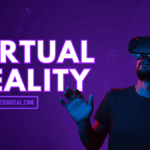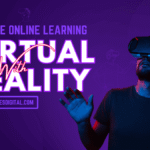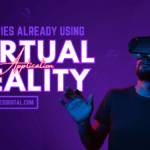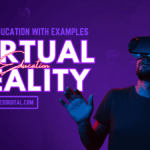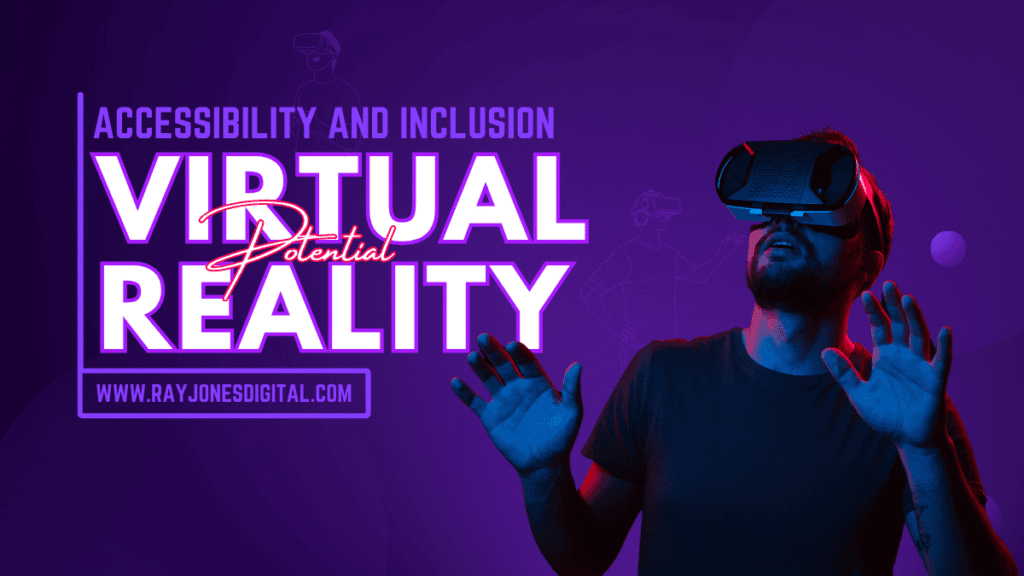
Virtual reality isn’t just transforming entertainment and gaming — it’s becoming a powerful tool for accessibility and inclusion. As VR for Accessibility technology advances, it’s creating unprecedented opportunities for people with disabilities to experience the world in new ways, access education and training, and participate more fully in digital society.
This emerging field represents a fundamental shift in how we think about accessibility technology. Rather than simply adapting existing tools, VR is creating entirely new possibilities for inclusive experiences. From helping visually impaired users navigate virtual spaces to providing safe practice environments for social skills development, VR is breaking down barriers that have long limited full participation in digital and physical worlds.
Understanding VR’s Role in Accessibility
Virtual reality’s potential for accessibility stems from its ability to create controlled, adaptable environments that can be tailored to individual needs. Unlike traditional interfaces that require users to adapt to technology, VR can adapt to users’ specific abilities and preferences.
The technology offers unique advantages for accessibility applications. VR environments can be modified in real-time to accommodate different sensory abilities, motor skills, and cognitive needs. Visual elements can be enhanced or replaced with audio cues, physical interactions can be simplified or eliminated, and complex environments can be broken down into manageable components.
This adaptability is particularly valuable for people with disabilities who often face barriers in accessing traditional digital interfaces. VR can provide alternative ways to interact with information and environments, creating more inclusive experiences than conventional screen-based technologies.
Current Applications in Accessibility
Vision Accessibility Solutions
VR technology is creating new possibilities for people with visual impairments. Spatial audio systems in VR environments can provide detailed auditory maps of virtual spaces, helping users navigate through sound cues and haptic feedback.
Companies like Immersive VR Education are developing applications that convert visual information into tactile and auditory experiences. These systems can describe objects, read text aloud, and provide audio guidance through complex virtual environments.
For people with low vision, VR can enhance visual information through magnification, high contrast modes, and customisable colour schemes. These adaptations can make visual content more accessible while maintaining the immersive experience that makes VR valuable.
Hearing Accessibility Features
VR environments can provide visual representations of audio content, creating more inclusive experiences for deaf and hard-of-hearing users. Spatial visualisation of sound sources helps users understand audio cues through visual indicators.
Real-time captioning systems in VR can display spoken dialogue and sound effects as text within the virtual environment. This integration feels more natural than traditional subtitles, as the text can appear contextually within the 3D space.
Sign language integration in VR environments allows deaf users to communicate naturally with others. Avatar systems can accurately represent sign language gestures, enabling more inclusive social VR experiences.
Motor Accessibility Adaptations
VR systems are being adapted for users with various motor disabilities. Eye-tracking technology enables hands-free interaction with virtual environments, allowing users to navigate and manipulate objects through gaze control.
Voice control systems integrated with VR provide alternative interaction methods for users with limited mobility. These systems can interpret spoken commands to control virtual objects and navigate through environments.
Customisable control schemes allow users to adapt VR interactions to their specific physical abilities. Button remapping, gesture simplification, and alternative input methods ensure that VR experiences remain accessible to users with diverse motor skills.
Educational Applications for Inclusive Learning
Special Education Support
VR is transforming special education by providing immersive learning environments that can be adapted to individual learning needs. Students with autism spectrum disorders can practice social interactions in safe, controlled virtual environments before applying these skills in real-world situations.
The technology enables creation of distraction-free learning spaces where students can focus on specific skills or concepts. Visual and auditory stimuli can be controlled to prevent sensory overload while maintaining engagement.
For students with learning disabilities, VR can provide alternative ways to access and process information.
Soft Skills Development for Diverse Learners
Building on AI-powered VR training concepts, accessibility-focused applications help diverse learners develop interpersonal skills. Virtual characters can be programmed to interact at appropriate complexity levels for different cognitive abilities.
These systems provide consistent, patient practice partners that never become frustrated or judgmental. Students can repeat scenarios as many times as needed to build confidence and competence.
The technology enables training for real-world situations that might be challenging or overwhelming in traditional settings. Students can practice job interviews, social interactions, and communication skills in supportive virtual environments.
Language Learning Accessibility
VR language learning applications can accommodate diverse learning styles and abilities. Visual learners can benefit from immersive virtual environments that provide contextual language practice.
Speech recognition systems can provide pronunciation feedback adapted to users with speech disabilities. These systems can be calibrated to recognise individual speech patterns and provide appropriate guidance.
Gesture-based interaction allows non-verbal learners to participate in language learning activities. Sign language integration enables deaf learners to access language learning content in their preferred communication mode.
Healthcare and Therapy Applications
Rehabilitation and Physical Therapy
VR is revolutionising rehabilitation by providing engaging, motivating environments for physical therapy exercises. Gamified experiences encourage patients to complete therapy routines while tracking progress and adjusting difficulty levels.
The technology enables precise movement tracking and real-time feedback, helping patients improve motor skills and coordination. Virtual environments can simulate real-world challenges in safe, controlled settings.
For patients with mobility limitations, VR can provide virtual travel experiences and social interactions that might otherwise be difficult to access.
Mental Health Support
VR therapy applications provide safe spaces for people with various mental health conditions to practice coping strategies and confront fears. Exposure therapy can be conducted in controlled virtual environments that gradually introduce challenging situations.
The technology enables therapists to create customised treatment environments that address specific patient needs. Virtual environments can be adjusted to provide optimal therapeutic conditions for each individual.
For patients with social anxiety or autism spectrum disorders, VR can provide structured practice opportunities for social skills development.
Cognitive Training and Support
Memory training games can help patients with dementia or traumatic brain injuries improve cognitive function through engaging virtual experiences.
The technology can provide cognitive load management by simplifying complex environments and focusing attention on specific tasks. This approach helps users with cognitive disabilities access content and experiences that might otherwise be overwhelming.
Personalised difficulty adjustment ensures that cognitive training remains appropriate for individual abilities and progress. The system can adapt in real-time to provide optimal challenge levels for continued improvement.
Emerging Technologies and Future Possibilities
Haptic Feedback Integration
Advanced haptic feedback systems are enhancing VR accessibility by providing tactile information about virtual environments. These systems can convey texture, temperature, and resistance, making virtual objects feel more real and informative.
For users with visual impairments, haptic feedback can provide essential information about object properties and spatial relationships. This tactile information can supplement or replace visual cues in VR environments.
The technology is becoming more sophisticated, with systems that can provide detailed tactile feedback about virtual text, shapes, and surfaces. This advancement opens new possibilities for accessible VR experiences.
Brain-Computer Interfaces
Research into brain-computer interfaces for VR is creating possibilities for direct neural control of virtual environments. This technology could provide new interaction methods for users with severe motor disabilities.
Early applications are exploring thought-controlled navigation and object manipulation in VR spaces. While still experimental, these systems show promise for creating more inclusive VR experiences.
The integration of brain-computer interfaces with VR could enable new forms of communication and interaction that bypass traditional physical limitations. This technology represents a significant step toward truly universal accessibility.
Artificial Intelligence Integration
AI systems are being integrated into VR accessibility applications to provide more personalised and adaptive experiences. Machine learning algorithms can analyse user behaviour and preferences to automatically adjust VR environments for optimal accessibility.
Intelligent virtual assistants can provide real-time support and guidance within VR environments. These assistants can offer contextual help, describe environments, and facilitate interactions for users with various disabilities.
Overcoming Implementation Challenges
Technical Barriers and Solutions
VR accessibility implementation faces several technical challenges, including hardware limitations and software compatibility issues. High-quality VR systems remain expensive, potentially limiting access for users who could benefit most from accessibility features.
Processing power requirements for sophisticated accessibility features can strain current VR systems. Developers must balance feature richness with performance to ensure smooth, accessible experiences.
Design Considerations for Inclusive VR
Creating truly inclusive VR experiences requires careful consideration of diverse user needs from the design phase. Universal design principles should guide development to ensure accessibility is built in rather than added later.
User testing with diverse disability communities is essential for identifying and addressing accessibility barriers. This testing should be ongoing throughout the development process, not just at the end.
Customisation options must be comprehensive enough to accommodate individual needs while remaining simple enough to use effectively. The balance between flexibility and usability is crucial for successful accessibility implementation.
Cost and Accessibility Considerations
The high cost of VR hardware can create barriers to accessibility for users who might benefit most from these technologies.
Training and support requirements for VR accessibility applications can be significant. Users, caregivers, and educators need comprehensive training to effectively use these technologies.
Ongoing maintenance and updates are necessary to ensure accessibility features remain functional and current.
Building an Inclusive VR Future
The future of VR accessibility depends on continued collaboration between technology developers, disability communities, and accessibility experts. User-centred design approaches must guide development to ensure that accessibility solutions truly meet user needs.
Investment in accessibility research and development is crucial for advancing the field. Public and private funding should support projects that explore new possibilities for inclusive VR experiences.
Education and awareness about VR accessibility potential can drive adoption and improvement. Demonstrating successful applications can encourage further investment and development in this important area.
As VR technology continues to evolve, its potential for accessibility and inclusion will only grow. By prioritising accessibility in VR development, we can create digital experiences that truly serve everyone, regardless of their abilities or disabilities.
The convergence of VR with accessibility represents more than technological innovation—it embodies a commitment to digital inclusion and equal access to immersive experiences. As we continue to explore these possibilities, we move toward a future where virtual reality truly opens doors for everyone.

I am Ray Jones Digital
My current occupations: a Digital Marketer, Local SEO expert, Link Builder, and WordPress SEO specialist. Shopify SEO, Ecommerce Store Management, and HTML & WordPress Developer I have been practicing the above mentioned services for more than 10 years now As an SEO expert working with your ongoing projects.
